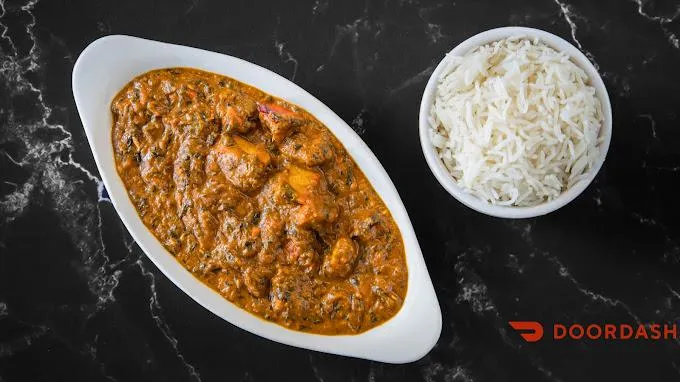Welcome To
Mirchi Indian Restaurant
Finest Restaurant In Town


Little About Us
Authentic Indian Flavors, Unforgettable Experience
Welcome to Mirchi Indian Restaurant, where tradition meets flavor! Located in the heart of Hamilton, Ohio, we bring you the finest and most authentic Indian cuisine, crafted with passion and rich spices. Our chefs use fresh ingredients and time-honored recipes to create dishes that celebrate India's vibrant culinary heritage.
Whether you're craving aromatic biryanis, sizzling tandoori delights, or flavorful curries, every bite at Mirchi Indian Restaurant promises a taste of home-cooked authenticity. With a warm and inviting atmosphere, exceptional service, and a menu that caters to all tastes, we are dedicated to providing an unforgettable dining experience. Visit us at 250 High St, Hamilton, OH 45011, or call us at +1 513-893-9019 to place an order. Experience the finest Indian cuisine today!
Discover Our
Popular Dishes
Popular Dishes
Popular Dishes
Saag Paneer $14.95
Our flavorful spinach with onions, ginger, Indian spices and cubes of Indian cheese.
Matar Paneer $14.95
Fresh green peas cooked with Indian cheese in spiced gravy.
Papadam $2.95
Crispy lentil wafers.
Aloo Cholay $14.95
Chick peas and potatoes cooked in mild sauce.OrderCallDirectionsWebsite
Paneer Kadai $14.95
Paneer cooked with fresh ginger, onions, tomatoes and green peppers.
Chicken Tikka $11.95
Tender pieces of chicken breast marinated in spices and yogurt and then cooked in our tandoori clay oven.
Vegetable Jalfrezi $14.95
Fresh vegetables cooked with green peppers, tomatoes and onions.
Chicken Pakora $7.95
Traditional boneless chicken pieces dipped in seasoned batter and fried.
Shahi Paneer $14.95
Chunks of cheese cooked in creamy tomato sauce with nuts and raisins.

Perfect Ingredients
This is our secret
At Mirchi Indian Restaurant, we believe that the secret to exceptional food lies in the ingredients. We use only the freshest herbs, handpicked spices, and high-quality ingredients to create dishes that burst with authentic Indian flavors. Every recipe is crafted with precision, passion, and a touch of tradition to ensure a dining experience like no other. Come taste the difference—where every bite tells a story of quality and authenticity! 📍Visit Us: 250 High St, Hamilton, OH 45011 📞Call Us: +1 513-893-9019

Best food comes with
Best Ingredients
Our Gallery
















Got Questions?
Find Your Answers Here!
1. What type of cuisine does Mirchi Indian Restaurant offer?
We specialize in authentic Indian cuisine, offering a variety of flavorful curries, biryanis, tandoori dishes, and traditional Indian appetizers.
2. Do you offer vegetarian and vegan options?
Yes! We have a wide range of vegetarian and vegan dishes made with fresh, high-quality ingredients to suit all dietary preferences.
3. Can I place an order for takeout or delivery?
Absolutely! You can order takeout by calling us at +1 513-893-9019, and we also partner with popular delivery services for your convenience.
4. Do you offer catering services for events?
Yes, we provide catering for all types of events, from small gatherings to large celebrations. Contact us for custom catering options!
5. What are your restaurant’s operating hours?
Monday - Thursday
11:00AM - 09:00PM
Friday to Sunday
11:00AM - 09:30PM
Happy Customer
CUSTOMER FEEDBACK

Jeremy Perkins
This is an amazing restaurant. We usually come here for lunch, and the amount of food you get even for lunch is so much that you’re capable of having leftovers for dinner too! The food is excellent, with a wide variety of traditional Indian meals for you to choose from.

Caitlin Bentley-Thayer
We've been here twice and absolutely love it! I'm so glad to have an Indian place of this high caliber right here in town. There's lots of vegetarian options too, which is great because we have lots of friends and family that don't eat meat. 💕

James Severance
Awesome food definitely highly recommended and nice restaurant! The only thing is many people wishes that they add a GYRO to the menu for the lamb and chicken because the meat is so good! I hope so. Please!

Aaron Harwood
I suggest eating in you seem to get a better portion. While the food tasted great, I was a bit disappointed this time with the chicken tikka order. For $18.95 at lunch this was the portion with rice. (came with free Nan woohoo) but the taste and portion size for the price didn’t jive.
How to get to us
How to get to us
Contact Info
Address

Opening Hours
Monday - Thursday
11:00AM - 09:00PM
Friday to Sunday
11:00AM - 09:30PM
© Copyright 2025. Mirchi Indian Restaurant. All Rights Reserved. Powered By Chuck Beyers Media | Privacy Policy.

